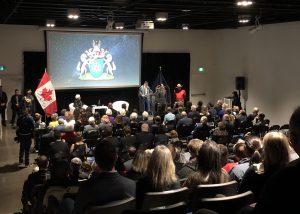
Kids
Meet the 2015 Canadian Geographic Challenge participants
The Canadian Geographic Challenge, now in its 20th anniversary year, will bring 20 young…
- 1691 words
- 7 minutes
This article is over 5 years old and may contain outdated information.
People & Culture

Andrew Young is the geography and social science teacher you wish you’d had. At G.P. Vanier Secondary School in Courtenay, B.C., and as a summer sessional geography instructor at the University of British Columbia, Young uses real-world examples to bring the discipline to life. Here are his top five lessons.
Andrew Young is the geography teacher you wish you’d had. The veteran educator of more than 20 years works hard to demonstrate real-world applications of the subject, showing his students that geography is more than simply colouring a map — it’s all around us.
Young earned a bachelor of education at Nova Scotia’s Dalhousie University in 1992. He was always interested in geography, but it was the influence of two fellow educators and RCGS Fellows — Stuart Semple (Young’s methods professor at Dalhousie) and Dick Mansfield (a prominent geography professor at Queen’s University) — that helped transform Young into a “geo-vangelist.”
“These men reignited the passion for geography I had when I was a little kid, sitting in the back seat of my car on family vacations and looking at my map, trying to find my way,” says Young.
Today, he teaches a number of subjects at G.P. Vanier Secondary School in Courtenay, B.C., including geography, law and political science, and also instructs summer sessional geography at the University of British Columbia.
Young earned the RCGS’s inaugural Innovation in Geography Teaching Award for engaging his students in real-world activities, such as geocaching and class trips to Mount St. Helens, and for his extensive work mentoring other teachers.
“Teaching geography is about teaching how to be a human in the world we’re in,” he says. “It opens our eyes to our place in the world and helps us navigate our way through.”
Are you passionate about Canadian geography?
You can support Canadian Geographic in 3 ways:

Kids
The Canadian Geographic Challenge, now in its 20th anniversary year, will bring 20 young…

People & Culture
The story of how a critically endangered Indigenous language can be saved

People & Culture
In celebration of its 90th year, the RCGS handed out awards to a diverse and star-studded roster of honourees

People & Culture
For generations, hunting, and the deep connection to the land it creates, has been a mainstay of Inuit culture. As the coastline changes rapidly—reshaping the marine landscape and jeopardizing the hunt—Inuit youth are charting ways to preserve the hunt, and their identity.